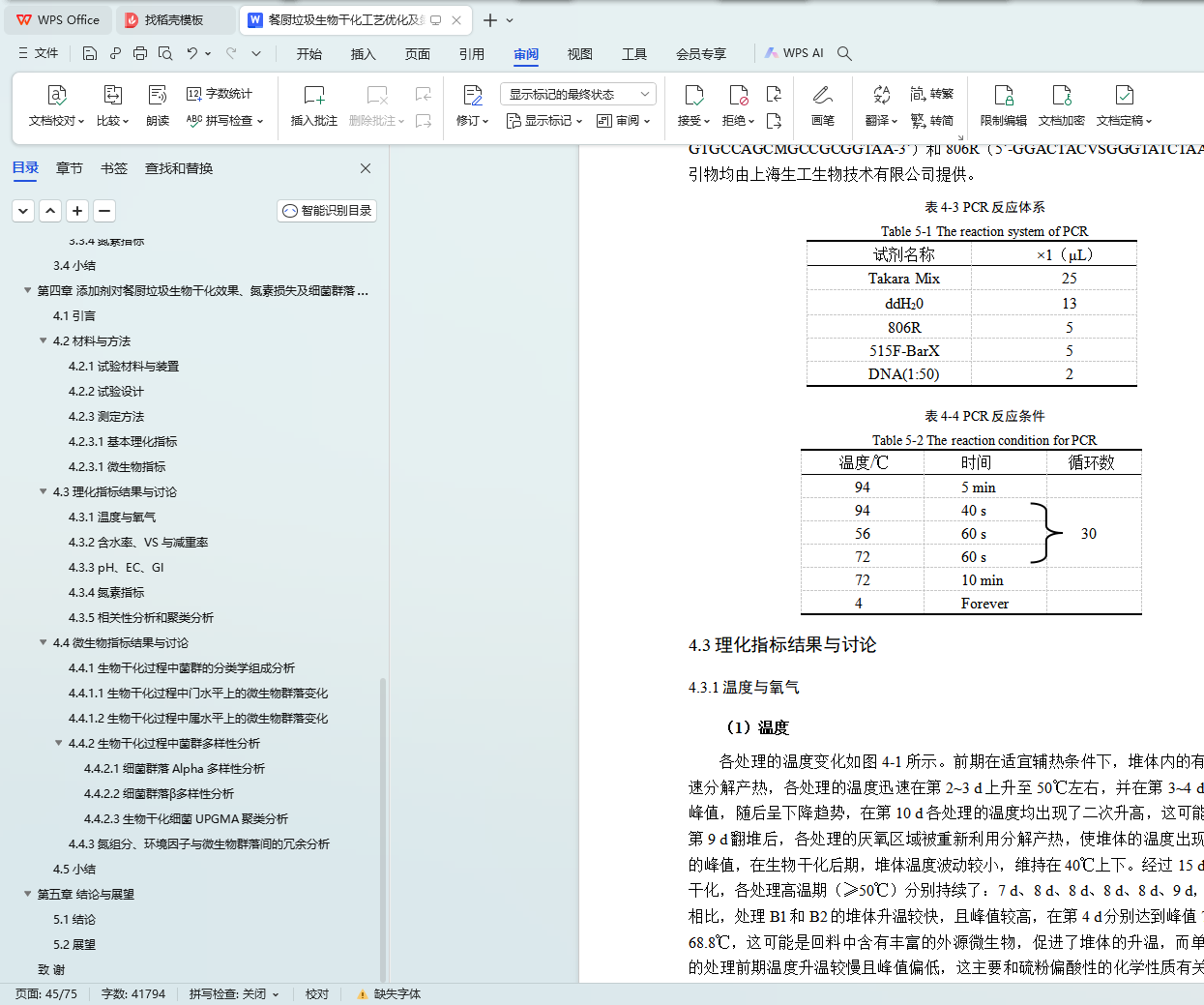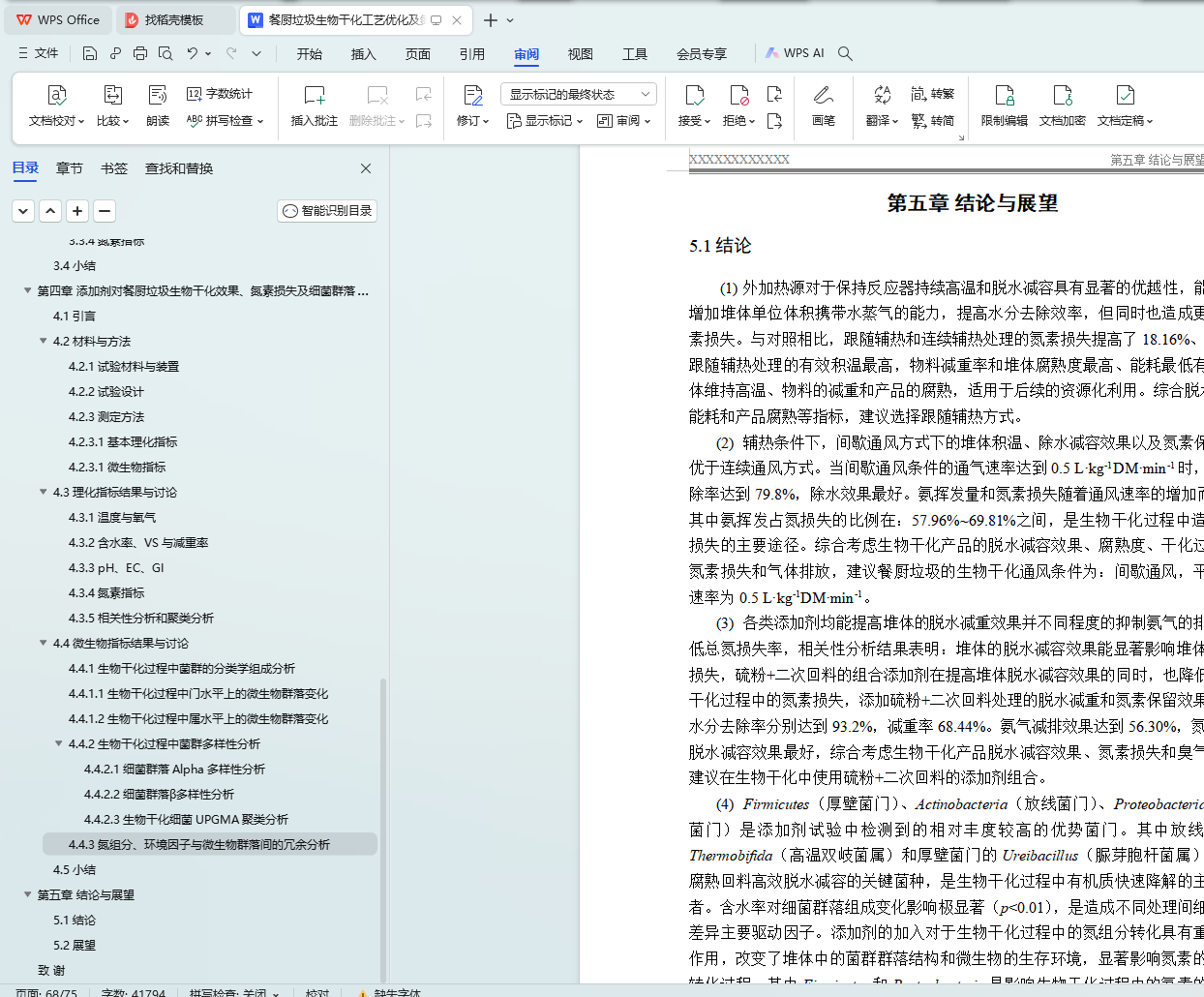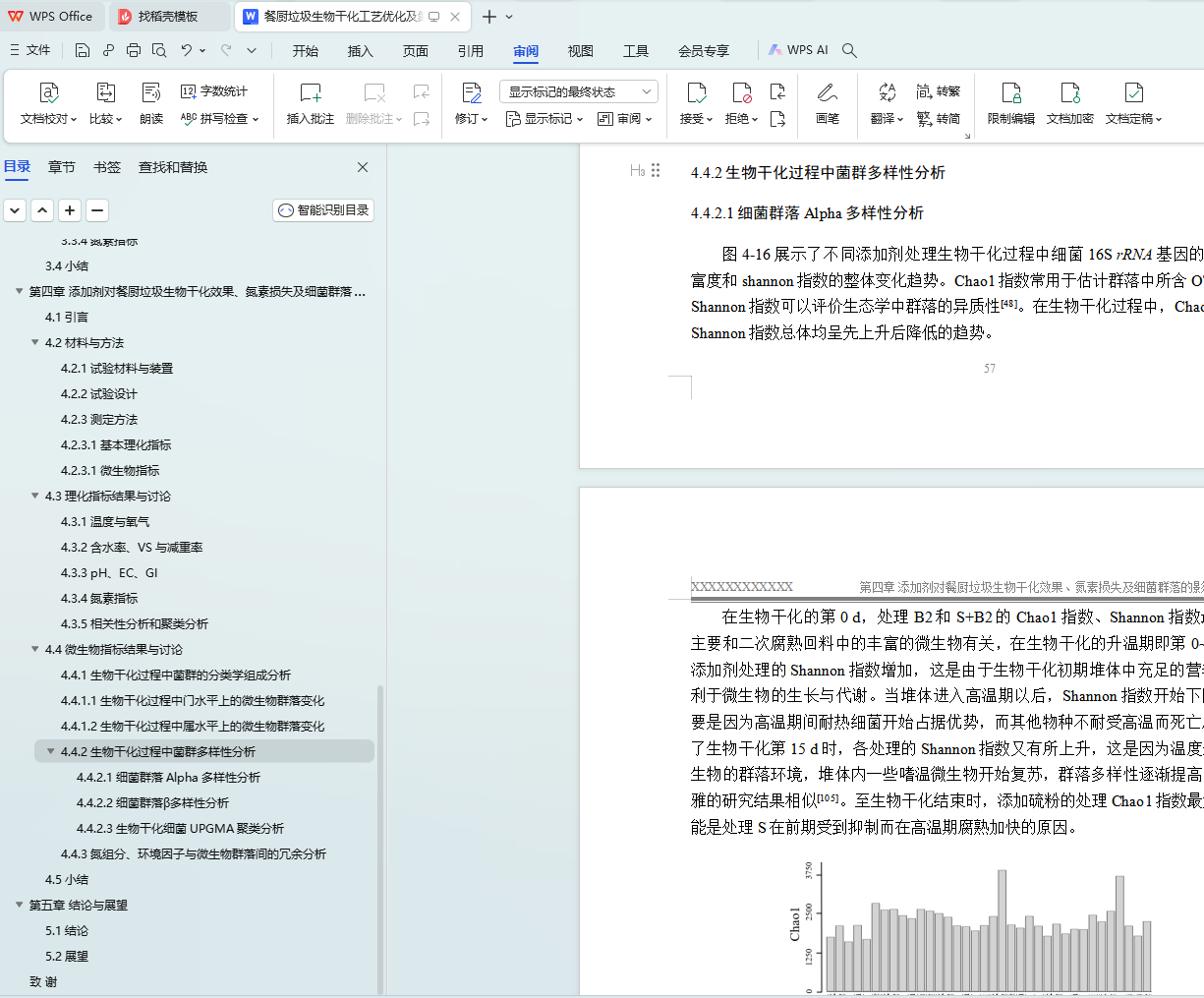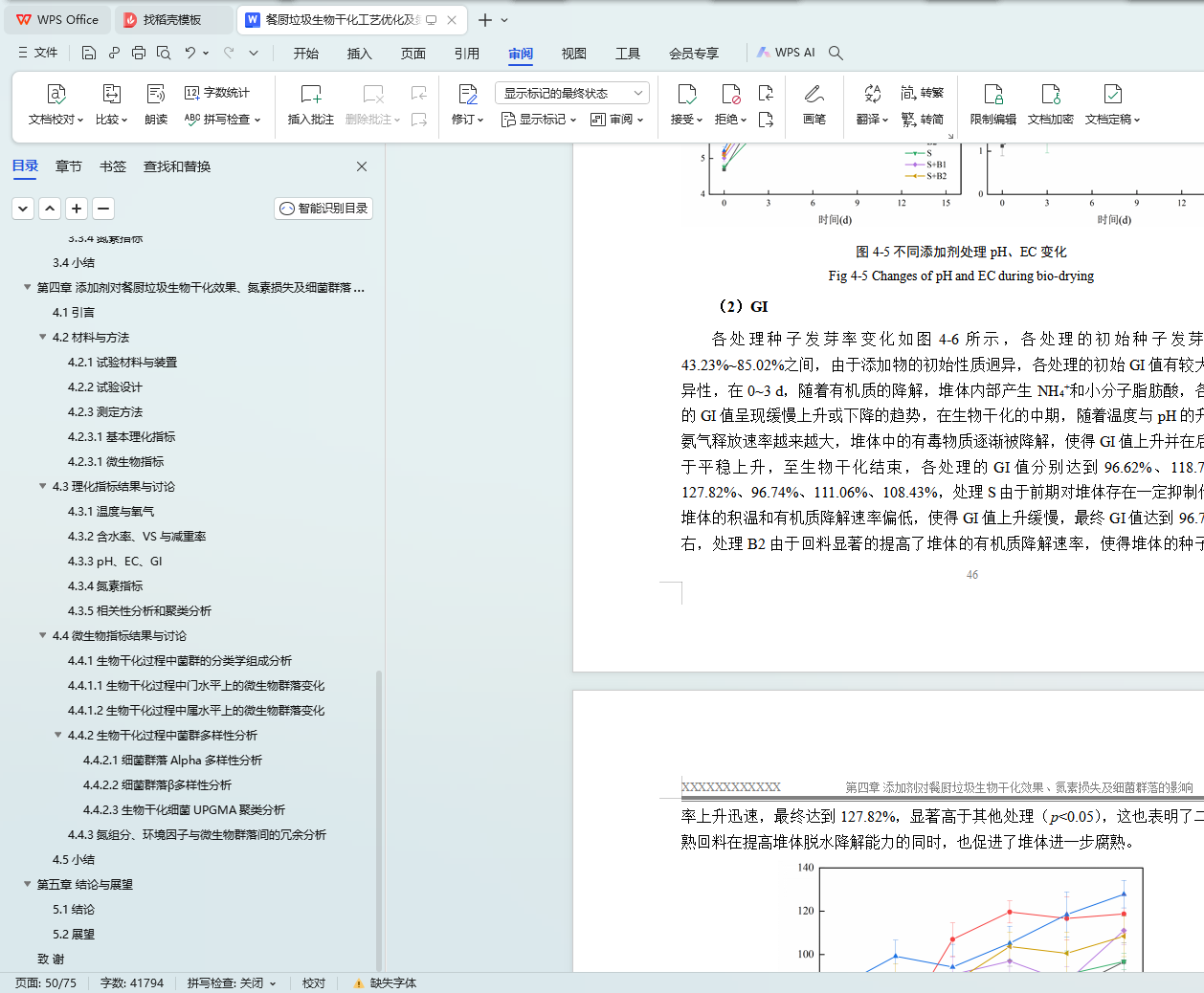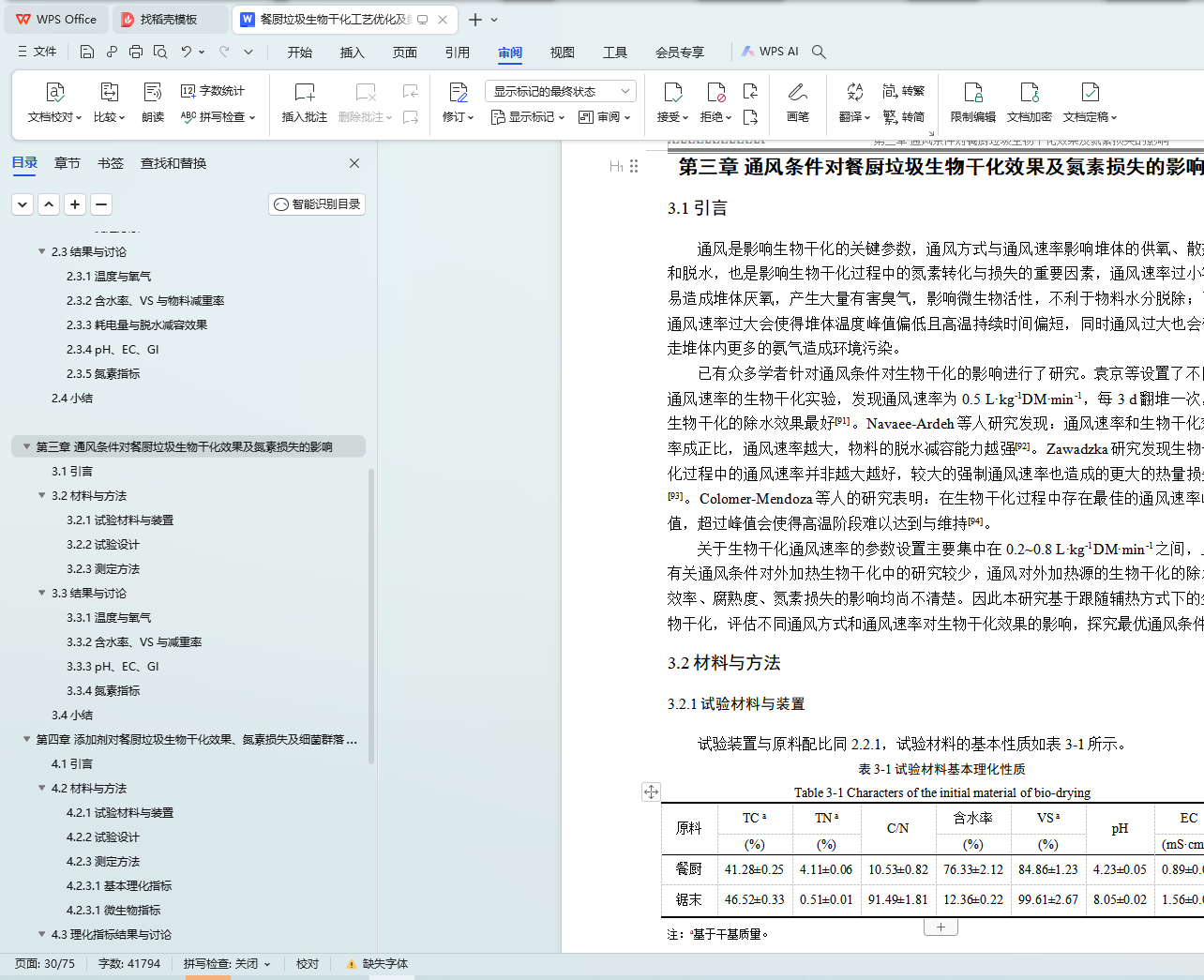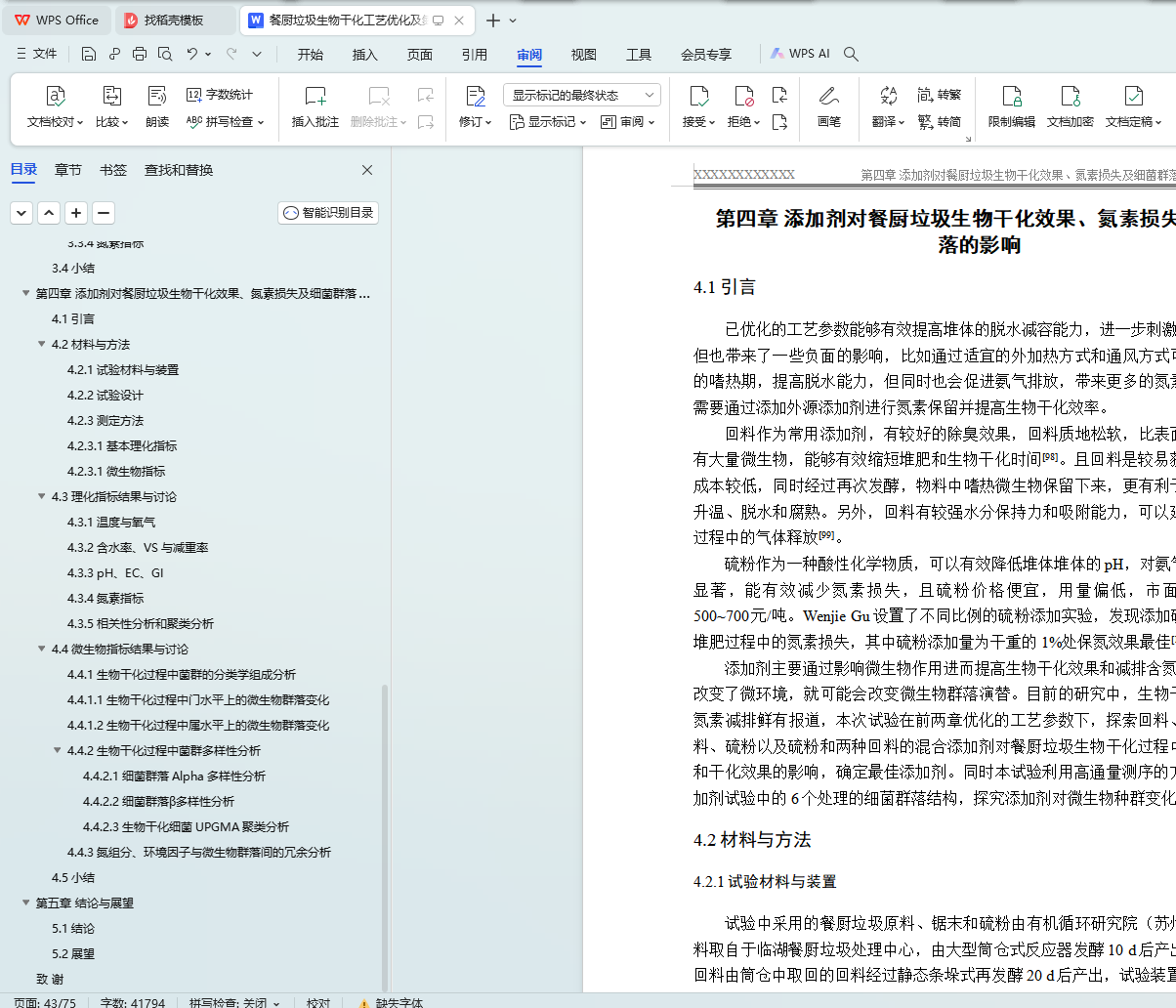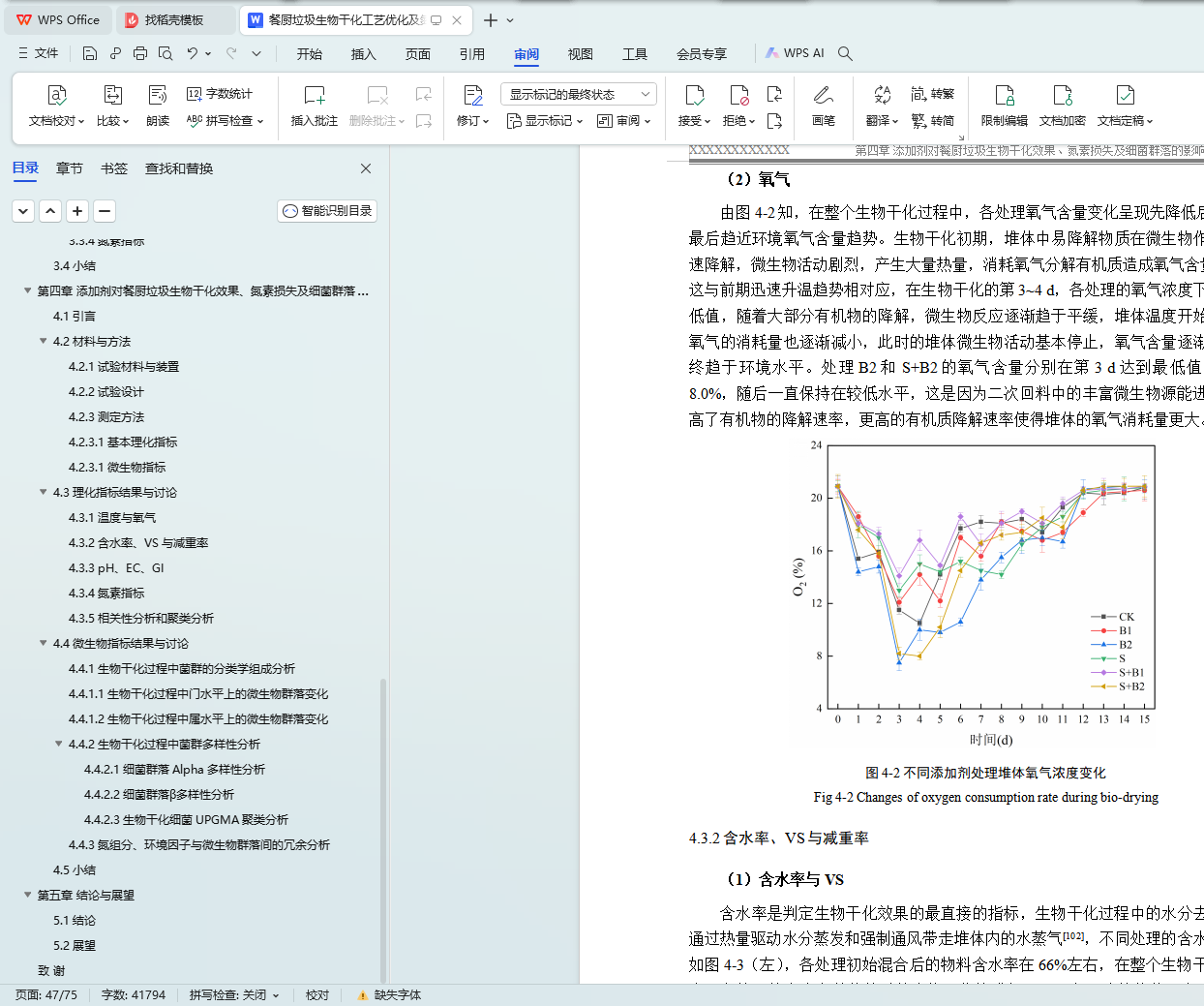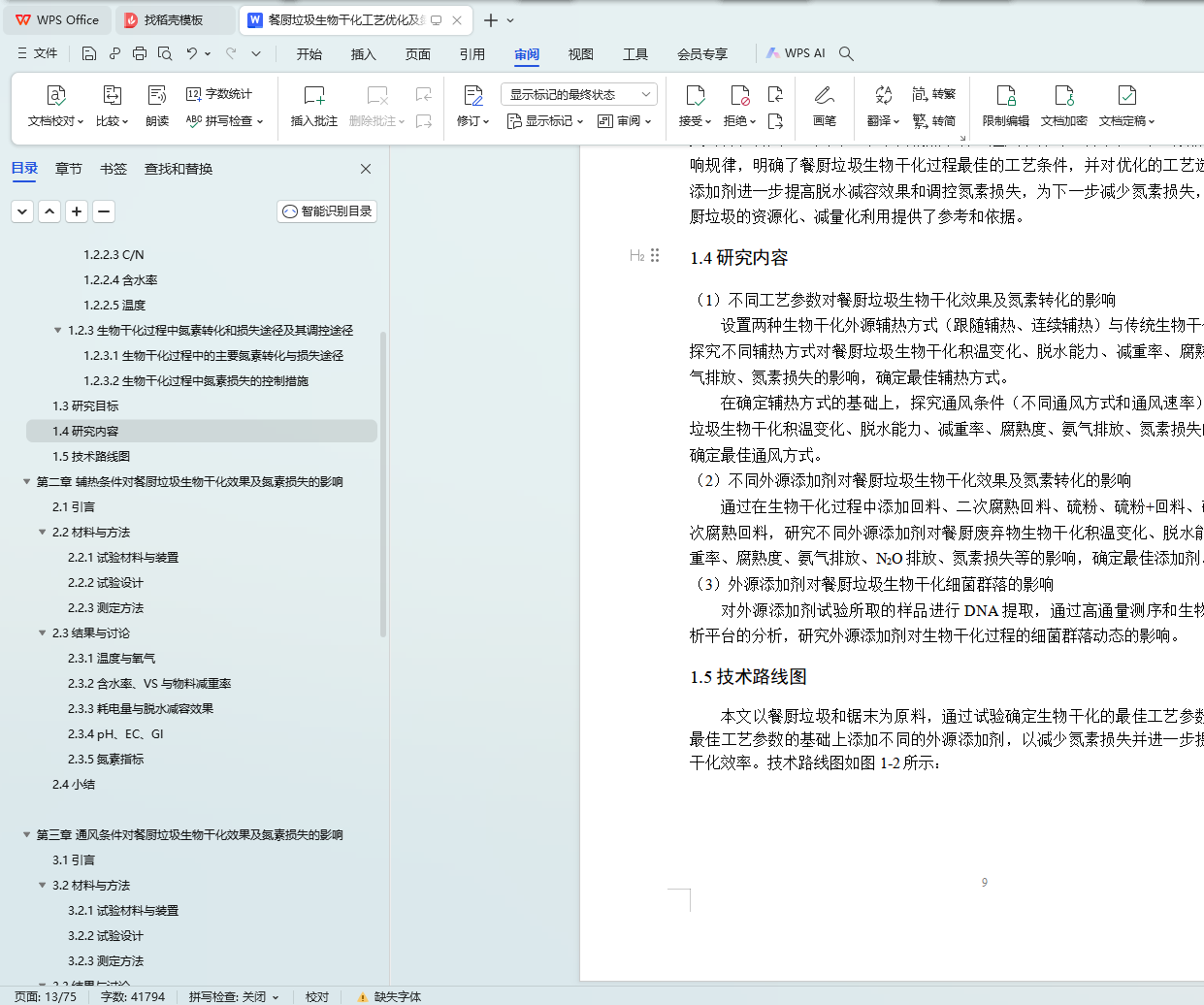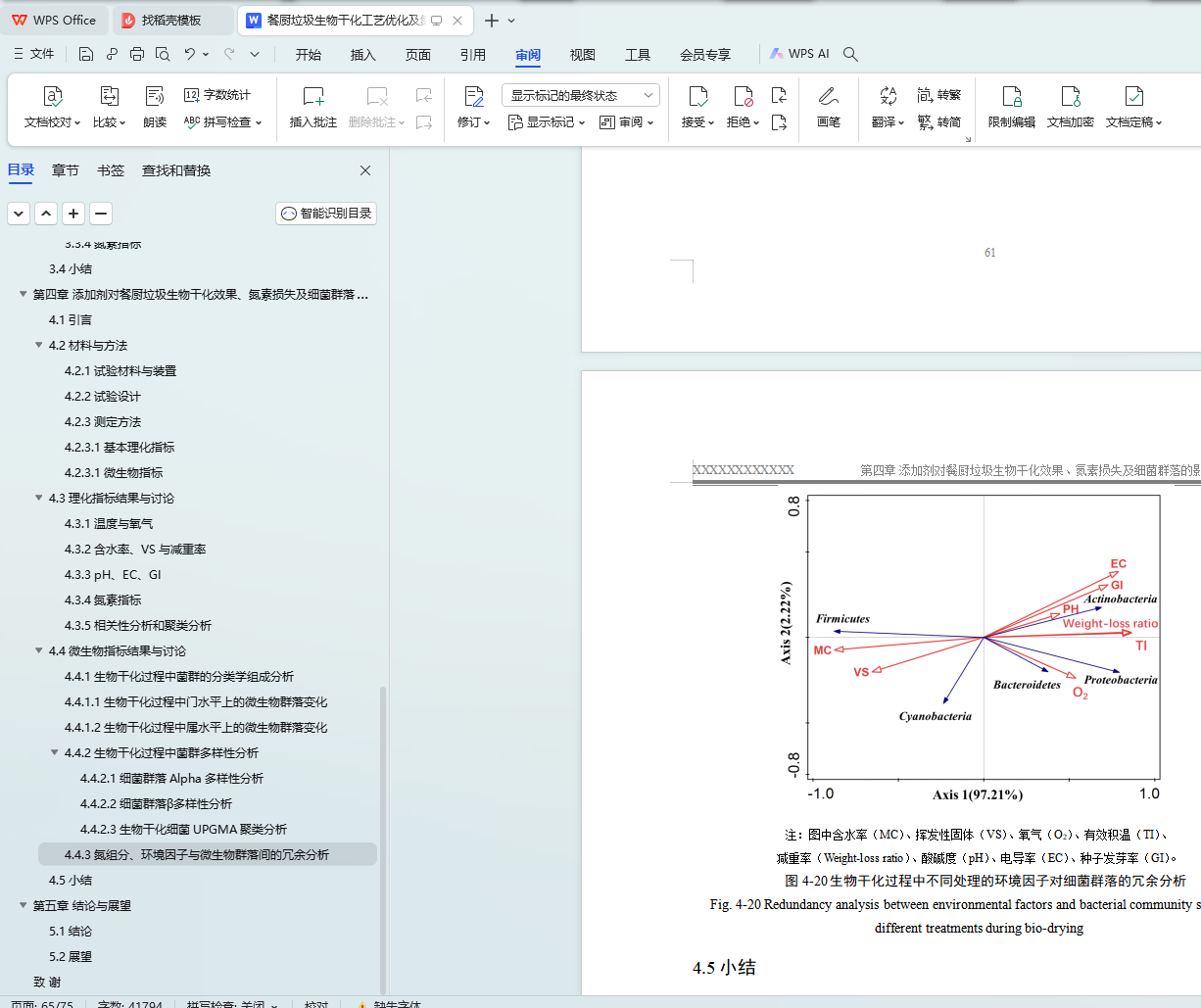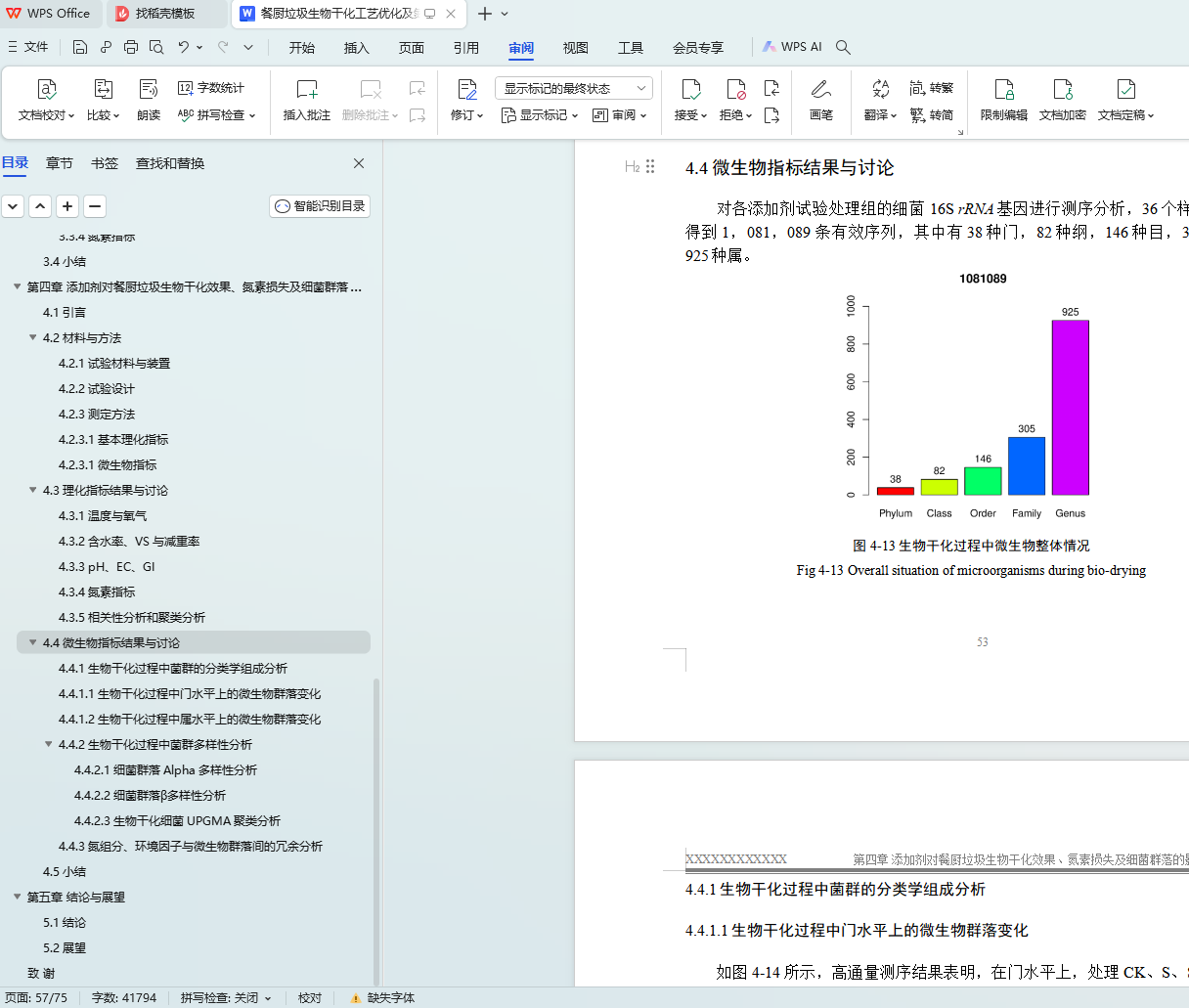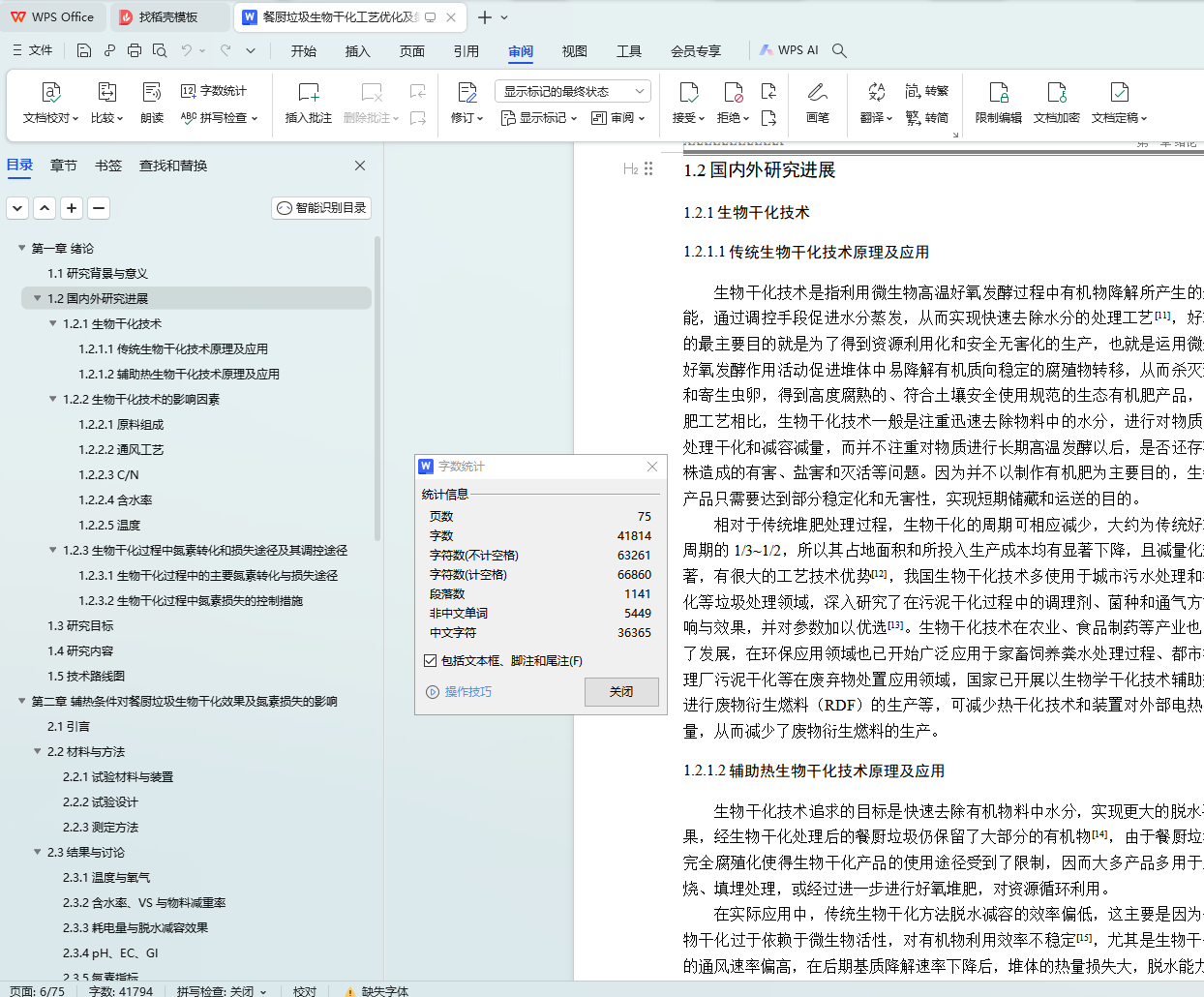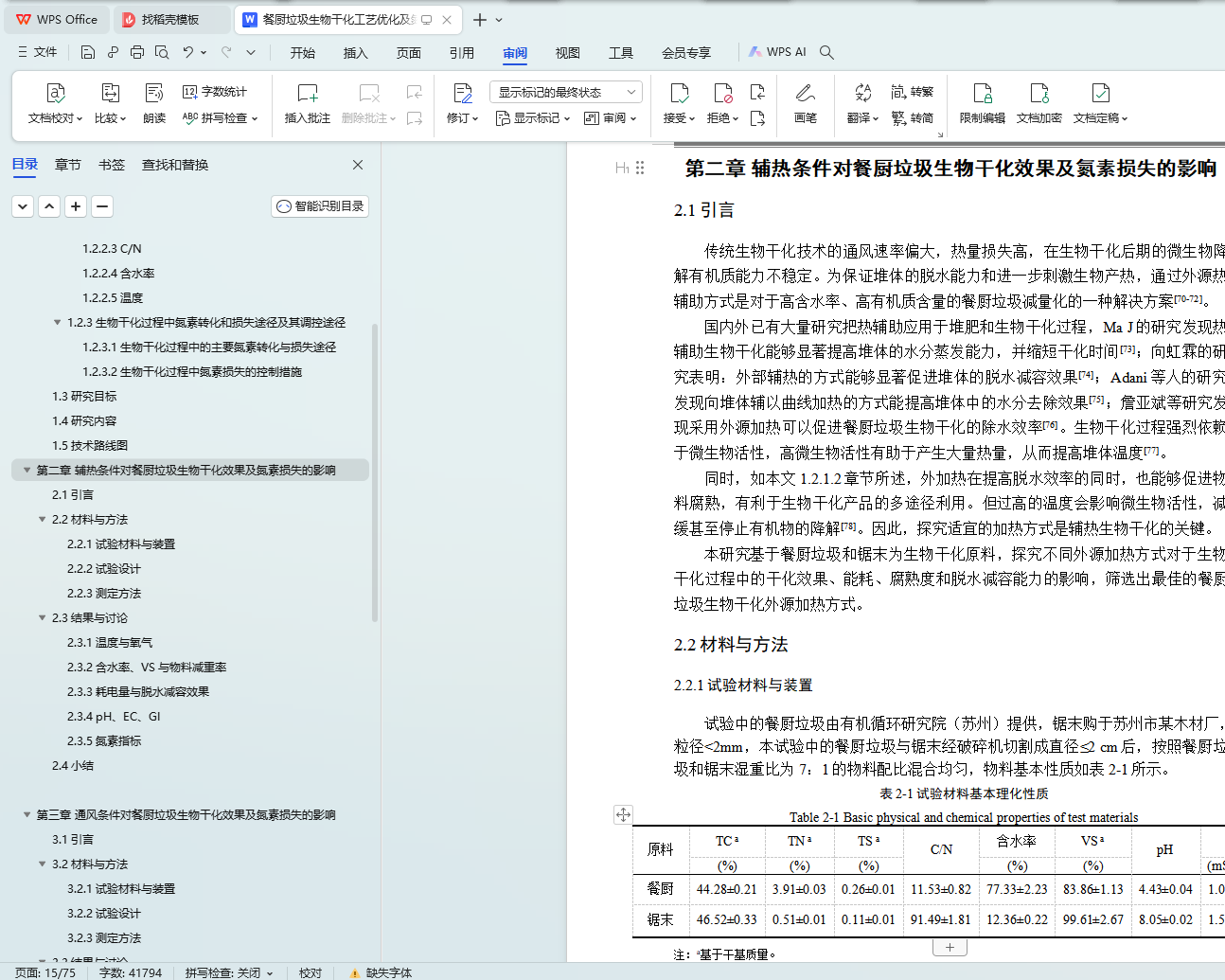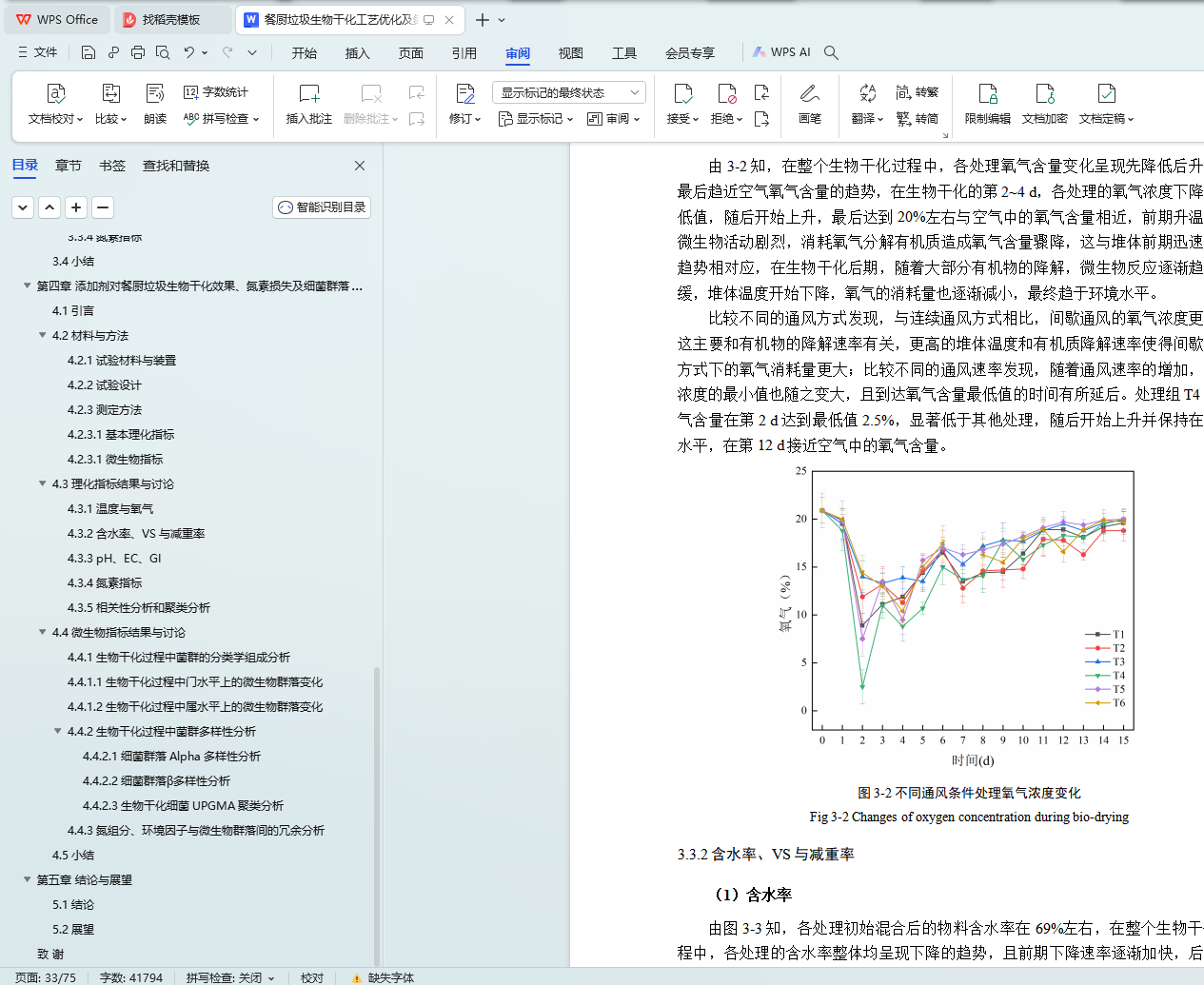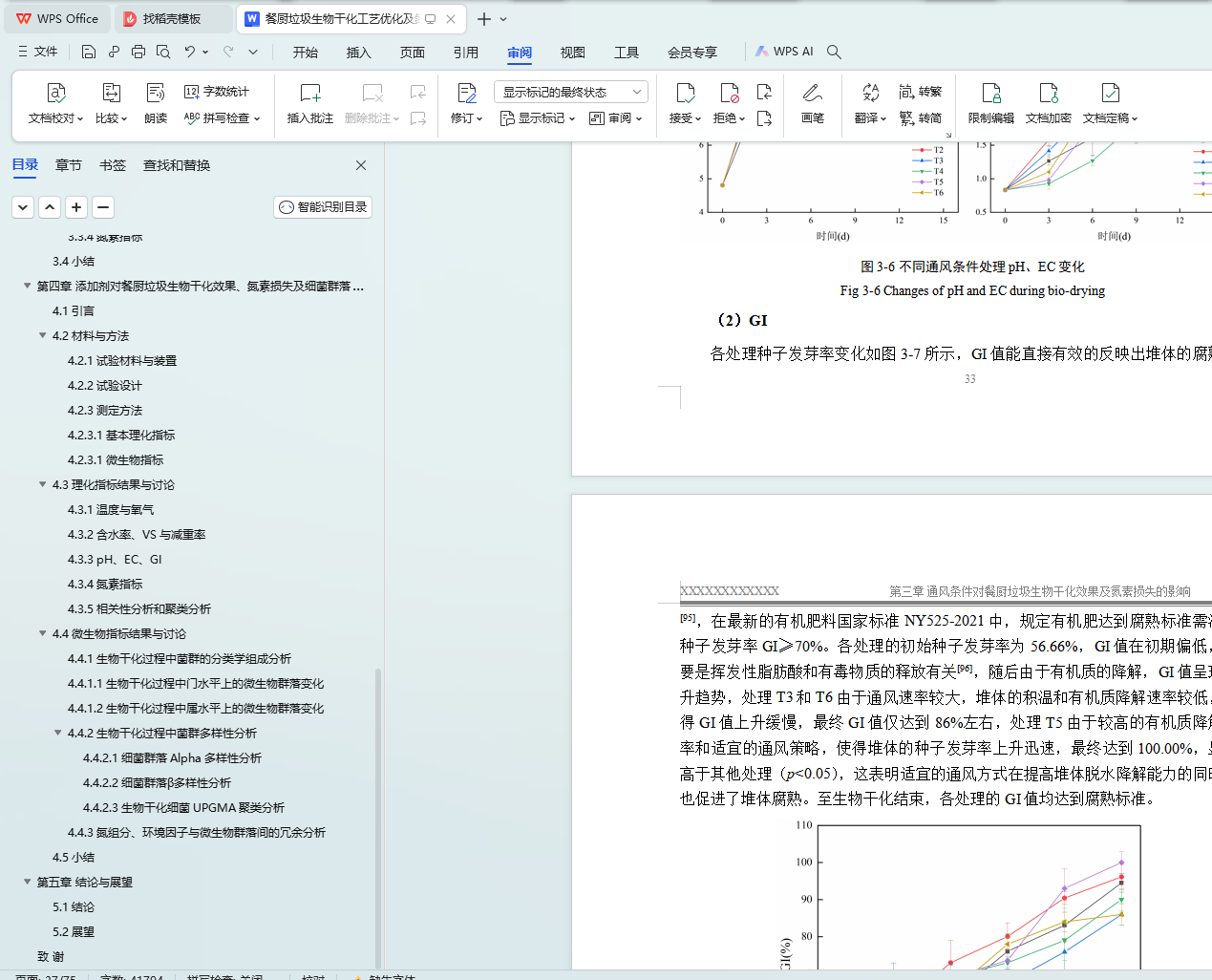摘 要
针对传统生物干化方法脱水减容效率偏低,氮素损失较大的问题,本文以餐厨垃圾和锯末作为原料,研究了不同辅热方式和通风条件对生物干化的脱水减容能力、腐熟度及氮素损失的影响,明确了餐厨垃圾生物干化过程的最佳脱水减容的工艺条件和氮素损失规律;在已优化工艺条件的基础上通过添加不同外源添加剂(回料、二次腐熟回料、硫粉、硫粉+回料、硫粉+二次腐熟回料)控制氮素损失并进一步提高生物干化效率,以适应巨量的餐厨垃圾处理需求,同时对减排过程中的细菌群落动态进行研究分析,研究结果表明:
(1) 外源辅热方式能够显著提高生物干化效率,但也会造成更大的氮素损失,与对照相比,外加热方式的脱水效果提高了32.71%~34.61%,同时氮素损失也提高了18.16%~18.71%;通风条件能显著影响生物干化过程中的脱水减容效果和氮素转化情况,氨挥发量和氮素损失随着通风速率的增加而增加,其中间歇通风方式的积温、脱水减容效果以及氮素保留能力都要优于连续通风。根据温度、脱水减容效果、腐熟度和能耗指标综合考虑,建议采用跟随辅热、间歇通风方式,通风速率为0.5 L·kg-1DM·min-1的餐厨垃圾生物干化工艺条件。
(2) 在优化工艺参数的基础上添加不同外源添加剂进行生物干化,发现各添加剂均能够不同程度的提高生物干化效果和抑制氨气排放,其中添加硫粉+二次回料的脱水减重效果最好,水分去除率分别达到93.2%,减重率达到68.44%,可实现NH3减排39.86%,N2O减排15.67%,氮素损失最小,有助于进一步提高生物干化效果并有效控制了干化过程中的氮素损失,综合考虑餐厨垃圾生物干化的外源添加剂为硫粉+二次腐熟回料。
(3) Firmicutes(厚壁菌门)、Actinobacteria(放线菌门)、Proteobacteria(变形菌门)是添加剂试验中检测到的相对丰度较高的优势菌门。其中Thermobifida(高温双岐菌属)和Ureibacillus(脲芽胞杆菌属)是二次腐熟回料高效脱水减容和有机质快速降解的关键菌种。添加剂的加入对于生物干化过程中的氮组分转化具有重要驱动作用,改变了堆体中的菌群群落结构和微生物的生存环境,显著影响氮素的损失与转化过程,其中Firmicutes和Proteobacteria是影响生物干化过程中的氮素的损失与转化的主要细菌群类。
关键词:餐厨垃圾;生物干化;辅热策略;脱水减容;氮素损失。
Abstract
To address the problems of low dewatering and capacity reduction efficiency and large nitrogen loss in traditional bio-drying methods, this paper investigates the effects of different auxiliary heat and ventilation conditions on the dewatering and capacity reduction capacity, maturity and nitrogen loss of bio-drying using kitchen waste and sawdust as raw materials, and clarifies the optimal dewatering and capacity reduction process conditions and nitrogen loss law for kitchen waste bio-drying process; based on the optimized process conditions, the nitrogen loss is controlled by Based on the optimized process conditions, the nitrogen loss was controlled and the bio-drying efficiency was further improved by adding different exogenous additives (regrind, secondary ripening regrind, sulfur powder, sulfur powder + regrind, sulfur powder + secondary ripening regrind) to meet the demand of huge amount of kitchen waste treatment, and the bacterial community dynamics in the reduction process was also studied and analyzed, and the results of the study showed that.
(1) Thermal assist method can significantly improve the efficiency of bio-drying, but it also causes greater nitrogen loss. compared with the CK, the dewatering effect of the thermal assist method increased by 32.71%~34.61%, but the nitrogen loss increased by 18.16%~18.71%; the ventilation conditions can significantly affect the dewatering and capacity reduction effect and nitrogen conversion during bio-drying, and the ammonia volatilization and nitrogen loss The ammonia volatilization and nitrogen loss increased with the increase of ventilation rate, in which the accumulation temperature, dewatering and capacity reduction effect and nitrogen retention capacity of intermittent ventilation were better than those of continuous ventilation. According to the comprehensive consideration of temperature, dewatering and capacity reduction effect, decomposition degree and energy consumption index, it is recommended to adopt the process conditions of kitchen waste bio-drying following auxiliary heat, intermittent ventilation method and ventilation rate of 0.5 L·kg-1DM·min-1
(2) Based on the optimization of process parameters by adding different exogenous additives for bio-drying, it was found that each additive could improve the bio-drying effect and suppress ammonia emission to different degrees, among which the best dewatering and weight reduction effect was achieved by adding sulfur powder + secondary return material, with water removal rate reaching 93.2% and weight reduction rate reaching 68.44%, respectively, which could achieve NH3 emission reduction of 39.86%, N2O emission reduction of 15.67%, with minimal nitrogen loss, which helps to further improve the bio-drying effect and effectively control the nitrogen loss in the drying process, and the exogenous additive for kitchen waste bio-drying is sulfur powder + secondary decomposed regrind under comprehensive consideration.
(3) Firmicutes, Actinobacteria and Proteobacteria were the dominant phyla with high relative abundance detected in the additive test. Among them, Thermobifida and Ureibacillus were the key strains for efficient dewatering and capacity reduction and rapid degradation of organic matter in secondary-rotted regrind. The addition of additives has an important driving effect on the conversion of nitrogen fraction in the bio-drying process, changing the structure of bacterial community and the survival environment of microorganisms in the pile, significantly affecting the process of nitrogen loss and conversion, The main bacterial groups were Firmicutes and Proteobacteria.
Key words: food waste, bio-drying, thermal assist strategies, dehydration and volume reduction, nitrogen loss.
目 录
第一章 绪论
1.1研究背景与意义
1.2国内外研究进展
1.3研究目标
1.4研究内容
1.5技术路线图
第二章 辅热条件对餐厨垃圾生物干化效果及氮素损失的影响
2.1引言
2.2材料与方法
2.3结果与讨论
2.4小结
第三章 通风条件对餐厨垃圾生物干化效果及氮素损失的影响
3.1引言
3.2材料与方法
3.3结果与讨论
3.4小结
第四章 添加剂对餐厨垃圾生物干化效果、氮素损失及细菌群落的影响
4.1引言
4.2材料与方法
4.3理化指标结果与讨论
4.4微生物指标结果与讨论
4.5小结
第五章 结论与展望
5.1结论
5.2展望
致 谢
作者简介
